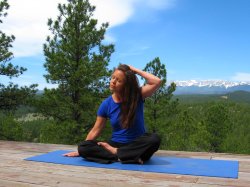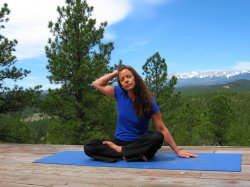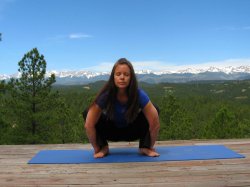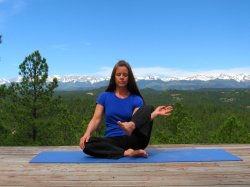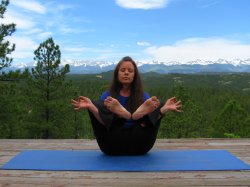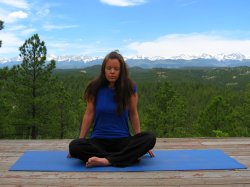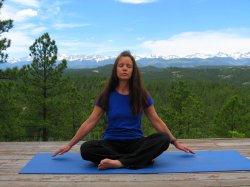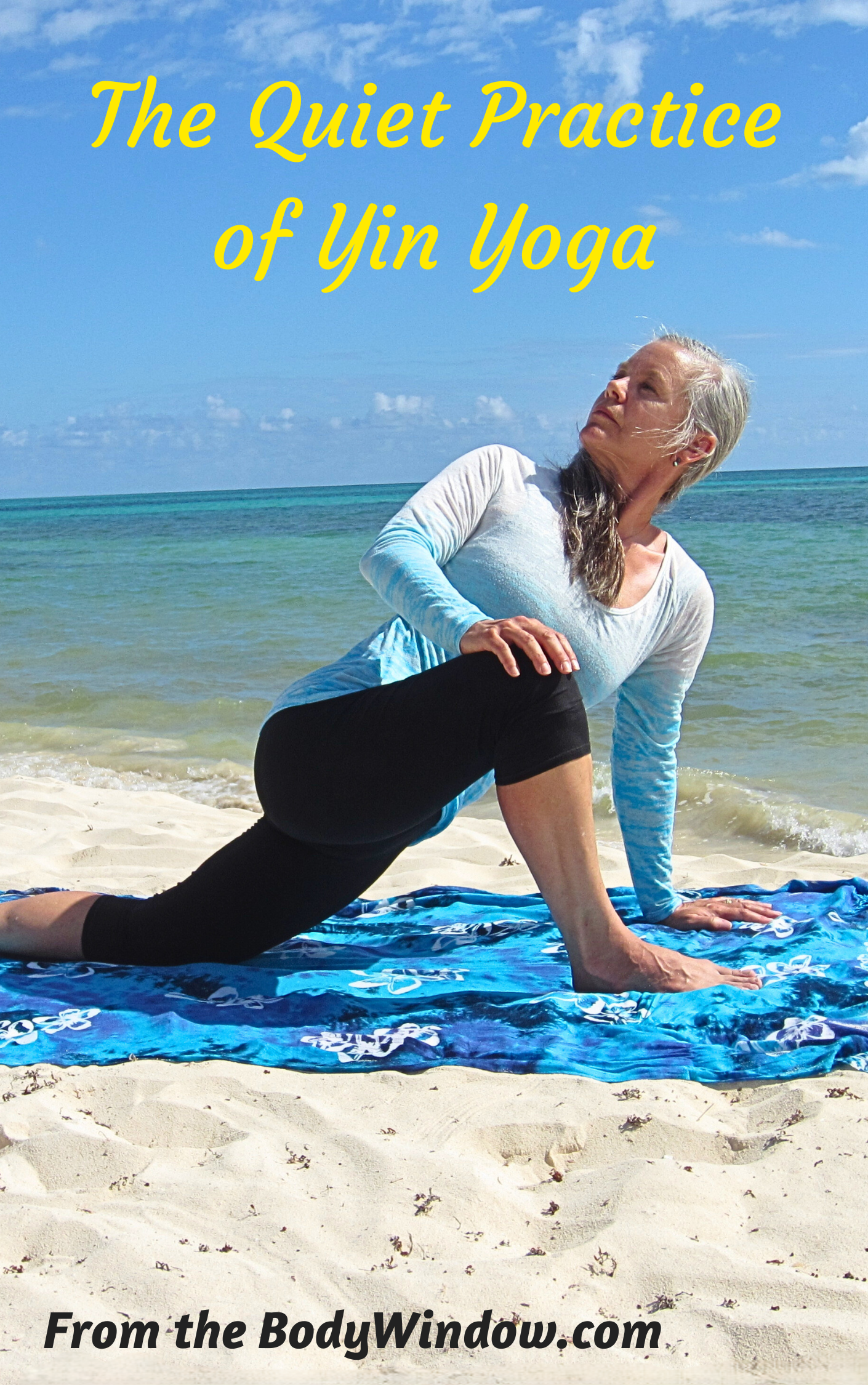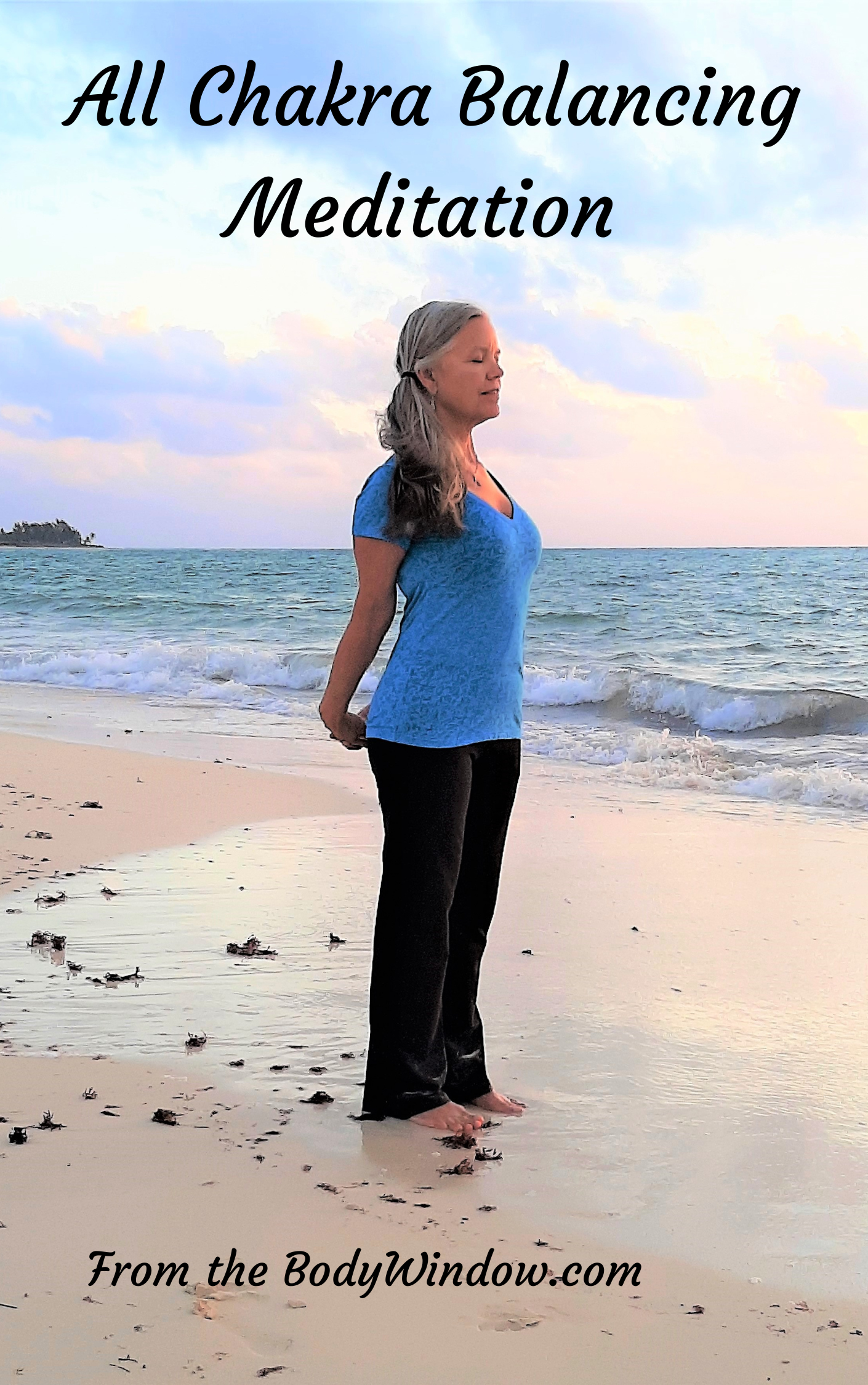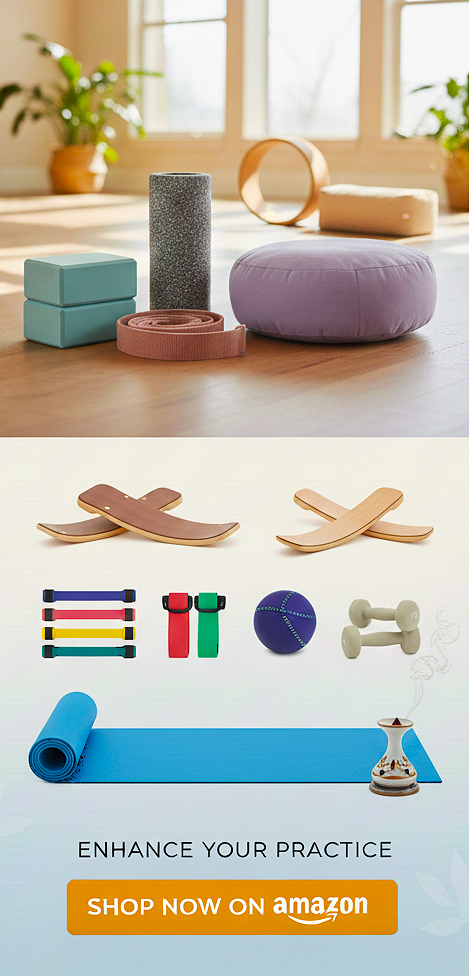Way ~ Through Your Body!
- Home
- Foam Rolling
- Foam Roller Exercises for Your Trapezius Muscles
Foam Roller Exercises and Stretches for Your Trapezius Muscles
Release your stress and tension in your neck and shoulders when you do foam roller exercises for your trapezius muscles. It can be a body-mind-soul experience that enhances your awareness of your body-mind connection! The trapezius muscles at the top of your shoulders are one of the most overused and tension-filled muscles.
'But the body is deeper than the soul and its secrets inscrutable.' ~ E.M. Foster (1879 – 1970)
I would first encourage you to read my anchor article on Foam Rolling. When you read this article you will learn how foam roller exercises provide for myofascial release. These exercises roll out the knots in your muscles to elongate them and provide a more balanced musculature.
Make the foam roller exercises meditative, and it is a way to release emotions as well, to heal more than just your body, but your heart and soul too!
The Body Window's Self-Guided Healing Course is Now Reduced to only 19.95 USD!
Click here to learn more about how this healing course can change your life!
If you would like a foam roller, I prefer the full size 36 x 6 inch round. This size will enable you to do the most exercises and is easier to manage, especially if you are a beginner. You can see what Amazon has to offer by clicking here. You may also like to roll on a yoga sticky mat for added comfort on hard surfaces.
This article specifically focuses on the trapezius muscles. For more information on the thoracic spine and the upper back, see my foam rolling article for the upper back.
The trapezius muscles make up the lion’s share of the muscles in the upper back, in addition to the rhomboids that lie underneath the trapezius muscles. The trapezius can be further broken down into the upper fibers, the middle fibers and the lower fibers.
The upper fibers are those that you feel at the top of the shoulders and neck, and are the area that we all seem to hold the most tension. More stress knots and muscle hot spots occur here in the upper trapezius area than perhaps any other area.
the effects of stress on the traps
When you get stressed, you instinctively hold your breath. Without being conscious of it, often you also automatically scrunch up your shoulders, neck and upper back. This involves the contraction of the trapezius muscles of the top of your shoulders.
When you do this often enough, the tension in the shoulders becomes chronic and usually leads to imbalance and poor posture. When poor posture becomes a habit, the shoulders slump and round forward. This then closes the chest, constricting the chest and making shallow breathing a problem. The shallower you breathe the less life energy you create. Breath is life. This leads to even more stress on your body.
By simply focusing on your shoulders as you breathe in deeply, you will find that your shoulder blades relax downward as you cease to tense up the trapezius muscles.
You also bring your chest out and up to fully benefit by taking in as much breath as you can. This deep breathing action should automatically improve your posture as your chest expands and your upper trapezius muscles relax!
the function of the trapezius muscles
The different sections of the trapezius muscles have different functions. In a nutshell, the upper fibers raise the scapulae, extend the neck, rotate and laterally flex the neck.
The middle fibers elevate, adduct and upwardly rotate the shoulder blades. The lower fibers also add the movement of depressing or pulling down the shoulder blade. To see the actual movements involving the trapezius muscles, I highly recommend you visit ExRx.net for their visuals of how this muscle functions.
meditate on the meaning of the trapezius and neck muscles in your life
The use of body metaphors is a very common occurrence
in our culture and is a reflection of our cultural knowledge of the body
mind connection. To understand this concept in more depth I have written What is a Metaphor so you can understand this concept more fully.
The trapezius muscle is highly involved in the movements of the neck and shoulders. If you have upper back pain and neck pain, the trapezius muscles may be involved, since the trapezius muscle is the largest muscle of the upper back.
In this section, I will include a discussion of the muscles of the neck in conjunction with the shoulders. I have discussed the body metaphors surrounding only the shoulders so I will not discuss shoulder metaphors here. (and there are many!)
The neck and shoulders contain muscles that work together to ‘hold your head up’ and ‘hold your head high.’ These are very important body metaphors, because the psychic energy required to hold your head high, is indicative of the times when your energy is flowing outward in a very positive manner.
All of you know of the time when you were ‘too tired to hold your head up.’ So the posture of your neck and shoulders is a very meaningful expression of your inner state and your level of energy.
You ‘hang your head’ when you are tired, feel shame or guilt. This posture represents the exact opposite of the above, doesn’t it? Or you ‘bow your head’ to show reverence. How would this posture be different from ‘hanging your head?’ I think all of you would recognize the difference, both in the language of the metaphor and the expression in the body, even though the posture is similar.
You ‘tilt your head back’ to display joy, express laughter or freedom. Tilting your head back denotes a carefree and happy feeling, quite different from just holding your head high. It is the extreme opposite emotion from shame or guilt, and you express it in the extreme opposite movements of the neck.
If you say, ‘he’s a pain in the neck,’ you are saying that a person bothers you to the extreme of causing you physical pain in the neck. It may indicate that you refuse to see another's side or another's position. If someone ‘turns your head around’ you are more than willing to see his point of view!
And finally, my favorite body metaphor of all, regarding the neck and shoulders is when you ‘stick your neck out.’ This body metaphor refers to a very vulnerable situation indeed. By sticking your neck out you are taking a risk that your very head will be chopped off!
It is stating your opinion beyond the conventional, regardless of what others might think. It is taking a chance by being different. It is not good or bad, necessarily, just the reflection of your internal beliefs. If you have a forward head posture or a ‘humpback,’ that has become chronic, you may want to try to understand why this is so. Are you sticking your neck out too far? Should you be finding a better balance?
"sticking his neck out"
I have a fantastic story to illustrate this phenomenon. I was watching TV one day, and happened on a PBS station. A gentleman, who turned out to be an MD, was intently speaking regarding food addictions and the inability for most people to lose weight. I became enamored of his speech. He was saying that if you treat weight loss as a function of the body you would never lose weight. Instead, he offered, you need to change your brain. I thought – woo hoo! – a body-mind-soul approach to weight loss. I couldn’t wait to hear more.
A gigantic picture was displayed on the wall behind him, showing us how he used to look: obese and unhealthy. Then, I noticed that he had a forward head posture, or a ‘humpback’ as I like to call it. A big red flag went up as my intuition kicked in. I couldn’t stop the thought: ‘He is sticking his neck out.’ As he was talking to the audience, in order to stress a point, he would push his head and neck forward toward the crowd even farther. Hmm, what did that mean?
I continued to listen avidly to what he had to say. He showed various PET scans of the brain on a large screen above the studio audience. He proceeded to go on to describe different types of brains, according to their scan and what each type meant to the person trying to lose weight.
This type of brain needed this treatment (i.e., supplement or medication). That type of brain needed that treatment. He proceeded to describe many different types of brains and what exact treatment they each specifically needed to lose weight.
It really WAS about the brain, the ‘dis-eased’ brain. According to him, if you did not take his recommended supplement, you could not lose weight. More red flags kicked in – he really was sticking his neck out!
Suddenly, I couldn’t make myself watch him anymore. He was, in my mind, scamming the traditional medical model: Take my magic pill and you will be well! (or in this case, you will lose weight). I switched the channel.
Later that day, curiosity overcame me and I looked up the name of the MD on the Internet. I discovered that consensus medical opinion did not support his views. The use of PET scans to diagnose a person’s weight-loss capabilities was controversial at best. My intuition had spoken to me and it was telling me that I was right about my impression. For me, he really was ‘sticking his neck out.’
Can you see how the use of intuition and observation will help you in your life? The better you become at understanding body metaphors, body postures and body language, the better you will be at understanding the inner condition of a lot of people.
But most importantly, if you yourself have upper back pain or neck pain, or have a forward neck posture, reflect on what this means about your inner condition!
create positive affirmations for health surrounding your neck and upper back pain:
- I believe in myself and hold my head high.
- I see all points of view.
- I tilt my head back in joy.
- I tilt my head back with laughter.
- The spirit in me honors the spirit in you.
- I have a good head on my shoulders and I hold my head up!
- I move my head to see all that is around me.
- My head turns easily in all directions to those who provide me with new ideas and insights!
foam roller exercises for your trapezius muscles
When you do your foam roller exercises for your trapezius
muscles, meditate on what the meaning of your sore neck, shoulders and
your upper back pain has in your life.
As you roll the area and hit a knot or sore spot, you can shorten the stroke, and focus short, back and forth movements on that spot. Or you can hold the pressure on the spot as you breathe deeply and really feel the soreness.
Meditate on what the knot may mean in your life as you roll it. Let the knot release, and with it an emotional release may also occur. You are elongating and creating space within your body for newness.
This space provides for relaxation and for healing. Create your own movements, as you go. Use your intuition to go where it hurts – to go to those areas that need work. Your spine may crack and if it does, this usually feels really good!
Foam rolling the upper back can be done to relieve upper back pain. Although most back pain is in the lower back, or lumbar spine, you may be surprised to find your upper back is quite sore too.
If you are using foam roller exercises for relief of upper back pain, proceed with caution! Never push so hard that the pain will cause you to hold your breath. That is counterproductive, because the holding of the breath will only tense the muscle further and not allow the myofascial release. This is exactly what you do not want! You do not want to create more tension in the muscle.
Always remember to breathe deeply and evenly, sending your breath and your attention to the sore area as you roll. This invites the relaxation response in your body. When you apply pressure to a sore area, increase the depth of your breath even more! Continue to breathe deeply throughout the entire foam roller exercise so that you are relaxing and releasing.
Pain may also be a warning that something more serious is wrong. You may need a medical evaluation if the pain is such that with moderate pressure and deep breathing, you cannot release the pain (See When Pain is a Medical Emergency).
While you roll, fully experience the pressure and the pain. Instead of avoiding the pain, fully experience it, by moving into the pain. As you deep breathe, the muscle will release. In the releasing, the emotions that started it in the first place will release as well, along with the accompanying physical pain. This is the beauty of foam roller exercises!
As with all Intuitive Movement, make my descriptions a starting point only. Always vary the foam roller exercises as you sense through your own body, where you need to go and how you need to move.
You will know intuitively, what is your most effective self-myofascial release. See also my upper back foam roller exercises. The foam roller exercises on this page are more targeted, to try to focus on specific areas of the trapezius muscle.
When you feel the myofascial release of the foam roller movements on your body, I know you will become addicted to it, as I have! It feels great!
foam roller exercise video for the trapezius and upper back:
Written Instructions, Followed by the Video, below:
- For the first foam roller exercise, begin with the foam roller placed just below your neck and just above your shoulder blades.
- Put your left hand behind your head with your left elbow bent. Keep your right arm straight in front of you.
- Keeping your feet flat on the floor and pushing into the ground for balance, lift your hips off the ground.
- Slowly log roll towards the right side, to target the right trapezius (upper back) muscle.
- Slowly roll up and down your trapezius, using your legs as leverage to push your body up as you roll. You will push mostly from the left leg.
- Use your right arm to help you balance if you need to.
- For the second foam roller exercise, begin in the identical position as the first exercise.
- This is a slight variation from the first exercise, to target a slightly different area.
- This time, put your right hand behind your head, with your right elbow bent. Keep your left arm straight.
- While still leaning to the right, and targeting the right trapezius, straighten out the right leg.
- Keep the left leg bent and push off from it to roll up and down the trapezius.
- Don’t forget to do the same for the left side trapezius.
- For the third foam roller exercise, place both hands behind your head.
- As before, with bent knees, and feet on the floor, leaning towards the right, to focus on the right trapezius muscle, slowly roll up and down the muscle.
- For the fourth foam roller exercise begin with the foam roller at the base of your neck, with legs bent and feet on the floor.
- Raise your arms above your head
- Again, using your feet to push off, roll up and down the upper back, stopping on any areas of upper back pain or soreness
- As with all foam roller exercises, vary your position on the roller to begin a little higher or a little lower, a little to the left or a little more to the right to get to your specific problem area!
upper back stretches
To enhance the release in your trapezius muscles, you can also do neck
and upper back stretches as part of your body-mind-soul healing program.
I am fond of the following yoga upper back stretches, that are in the
following video: Cat/Cow Stretch, Child's Pose, Cobra Pose and Downward Dog.
The following are standard trap/upper back stretches. When you do the first two upper back stretches below, pull on your head, as you focus on dropping the opposite shoulder, to try to touch the ground by your side. You can also try the more difficult Garland Pose that will really pull on your upper shoulders for a great upper back stretch of the trapezius. The garland pose will also really open your hips.
In the next two upper back stretches, wrap your elbow around the underside of your knee. The weight of your leg will pull your shoulder down for a great trapezius stretch. I call this the Half-Flowering Lotus Pose. These poses also open your hips as well as stretch your Traps. Just for fun, for a real stretch and balance/core exercise, reach for both legs at once and try the full Flowering Lotus Pose!
Another great trapezius exercise stretch is the shoulder shrug. Shrug your shoulders up as tight as you can. Then release your trapezius muscles by dropping your shoulders as you bring your arms out to the side to reach down to touch the ground, as illustrated:
If you have neck pain that accompanies your upper back and trap pain,
you may want to do some basic, meditative neck stretches by going to my
article on neck pain.
Don't forget that I have even more yoga upper back stretches on my upper back foam roller exercises page. You may wish to visit this page as well.
May your body-mind-soul be healed as you use my foam roller exercises for the trapezius muscles in your daily routine!
foam roller exercises for the upper body and upper back:
- Upper Back (Thoracic Spine).
- Shoulder Muscles that Focus on Opening the Shoulder.
- Latissimus Dorsi (Muscles in the Side and Back).
- Pectoral Muscles that focus on Opening your Chest.
- Upper Arms ~ Biceps and Triceps.
- Forearms ~ Brachioradialis, Wrist Flexors and Extensors.
- Myofascial Release ~ The Self-Emptying of Body-Mind-Soul Kenosis
- Using Your Roller for Developing Intuition.
Can't find what you're looking for? Search this website:
Support This Website and Its Mission
Thank you so much for considering a donation to help support this website. I appreciate your thank-you for access to so much free information. If you feel you have been blessed by this website, thank-you for your donation! (Please note that you will be directed to PilgrimageTraveler.com's Paypal page when you click the donate button. This is another website of mine, a subsidiary and I have consolidated two accounts!)
© Copyright 2009-, by Elle Bieling, BodyWindow.com
All Rights Reserved
We also hereby confirm, as stated in our Privacy Policy, that we do not sell personal information of any kind.
Information on this website is not intended for medical advice. See your health care provider for any health concerns. By using this website and/or practicing any yoga postures, foam rolling exercises or other physical movements contained herein, you are agreeing that you are in good health, cleared by your healthcare professional to participate in physical activities and you release The Body Window from any liability involved in the practice.

